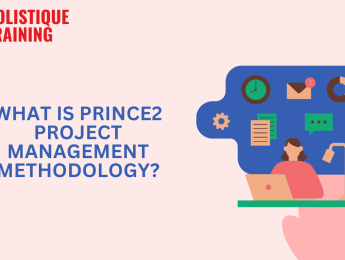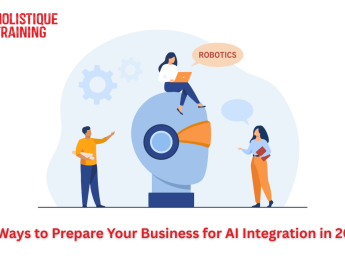Introduction
PRINCE2 (Projects IN Controlled Environments) is a widely recognized project management methodology that provides a structured approach to managing projects effectively across various industries. Developed by the UK government, PRINCE2 emphasizes clear roles, rigorous processes, and adaptability, making it one of the most popular methodologies worldwide. In today’s complex business landscape, having a robust project management methodology like PRINCE2 is crucial for ensuring projects are completed on time, within budget, and to the desired quality standards. It offers a comprehensive framework that helps organizations achieve their objectives while minimizing risks and optimizing resources.
Core Principles of PRINCE2
The PRINCE2 (Projects IN Controlled Environments) project management methodology is built on seven core principles that ensure its adaptability and effectiveness across various types of projects. These principles are fundamental to the PRINCE2 framework and must be applied in any project that claims to follow PRINCE2.
The first principle, Continued Business Justification, emphasizes that a project should only proceed if it remains viable and aligned with the organization’s business objectives. This principle ensures that resources are not wasted on projects that no longer provide value. Projects are assessed at multiple stages to confirm that they continue to support the business case.
The second principle, Learn from Experience, underscores the importance of reflecting on past projects to improve future ones. This principle encourages the integration of lessons learned at each stage, ensuring that teams build on past successes and avoid repeating mistakes.
Defined Roles and Responsibilities is another key principle, highlighting the need for a clear organizational structure within the project. Each team member should understand their specific role, responsibilities, and the interrelationships between different roles. This clarity ensures accountability and facilitates smoother communication.
The fourth principle, Manage by Stages, breaks the project into manageable phases, allowing for better control and decision-making at predefined points. Each stage serves as a checkpoint where progress is reviewed, and plans for the next stage are refined.
Manage by Exception is a principle that empowers project boards to set tolerances for each project aspect, such as time, cost, scope, and quality. If these tolerances are exceeded, the project manager must escalate the issue. This principle reduces the need for constant oversight by senior management, allowing them to focus only on critical decisions.
The sixth principle, Focus on Products, centers the project on delivering clearly defined and agreed-upon outputs. By concentrating on the quality and specifications of the deliverables, PRINCE2 ensures that the project’s outcomes meet stakeholder expectations.
Lastly, Tailor to Suit the Project Environment acknowledges that no two projects are identical. This principle allows PRINCE2 to be adapted to the specific needs, size, complexity, and risks of the project. By tailoring the methodology, teams can ensure it remains practical and applicable to their particular project.
Key Aspects of Each Principle:
- Continued Business Justification:
- Regular assessment of project alignment with business objectives.
- Justification for the project must be documented and approved.
- Learn from Experience:
- Continuous learning process throughout the project lifecycle.
- Incorporation of lessons learned into future stages and projects.
- Defined Roles and Responsibilities:
- Clear definition of roles within the project team.
- Accountability and authority are established for each role.
- Manage by Stages:
- Division of the project into manageable phases.
- Stage-based reviews and planning.
- Manage by Exception:
- Establishment of project tolerances for time, cost, scope, and quality.
- Escalation of issues only when tolerances are exceeded.
- Focus on Products:
- Clear definition of deliverables.
- Quality assurance and validation of project outputs.
- Tailor to Suit the Project Environment:
- Adaptation of PRINCE2 methodology to the specific needs of the project.
- Flexibility to accommodate different project sizes and complexities.
Table: Core Principles of PRINCE2
PRINCE2 Core Principle | Description | Key Aspects |
Continued Business Justification | Ensures the project remains viable and aligned with business objectives. | - Regular assessment of project alignment with business objectives. - Justification must be documented and approved. |
Learn from Experience | Emphasizes the importance of integrating lessons learned from past projects into future ones. | - Continuous learning process throughout the project lifecycle. - Incorporation of lessons into future stages. |
Defined Roles and Responsibilities | Highlights the need for a clear organizational structure and role clarity within the project team. | - Clear definition of roles within the project team. - Accountability and authority established for each role. |
Manage by Stages | Divides the project into manageable phases, with checkpoints for review and planning. | - Division into manageable phases. - Stage-based reviews and planning. |
Manage by Exception | Empowers project boards to set tolerances for project aspects, escalating issues only when these are exceeded. | - Establishment of tolerances for time, cost, scope, and quality. - Escalation only when tolerances are exceeded. |
Focus on Products | Focuses on delivering clearly defined and agreed-upon outputs that meet stakeholder expectations. | - Clear definition of deliverables. - Quality assurance and validation of outputs. |
Tailor to Suit the Project Environment | Allows PRINCE2 to be adapted to the specific needs, size, complexity, and risks of the project. | - Adaptation to the project's specific needs. - Flexibility to accommodate different sizes and complexities. |
Roles and Responsibilities in PRINCE2
In the PRINCE2 project management methodology, clearly defined roles and responsibilities are crucial for ensuring that the project runs smoothly and that each team member understands their specific duties and authority. The structure of roles within PRINCE2 is designed to maintain a balance between managing the project and delivering the outputs while ensuring accountability and effective communication throughout the project's lifecycle.
At the top of the hierarchy is the Project Board, which consists of senior management or key stakeholders representing the business, the user, and the supplier. The Project Board is responsible for overall project governance, making critical decisions, and ensuring that the project remains aligned with business objectives. They provide direction and guidance to the project manager and approve major plans and resources. The Project Board also monitors project progress and ensures that the project delivers value to the organization.
The Project Manager plays a central role in PRINCE2, taking on the day-to-day management of the project. This role involves planning, executing, and closing the project while adhering to the constraints set by the Project Board. The Project Manager is responsible for creating and maintaining the project plan, managing resources, overseeing project risks, and ensuring that the project stays on track to meet its objectives. They serve as the primary point of communication between the Project Board and the project team, ensuring that all stakeholders are informed and involved as necessary.
Supporting the Project Manager, the Team Manager is responsible for delivering specific project outputs, as defined in the work packages assigned by the Project Manager. The Team Manager coordinates the work of the team members, ensures that tasks are completed on time and within quality standards, and reports progress to the Project Manager. This role is particularly important in large projects where the Project Manager may need to delegate the management of detailed tasks to specialized teams.
Project Assurance is a role within PRINCE2 that acts as an independent check on the project's processes and performance. It ensures that the project remains on track to deliver the expected outcomes, adheres to the business case, and complies with organizational standards and policies. Project Assurance provides an unbiased perspective, offering advice and feedback to both the Project Manager and the Project Board, and helps identify potential issues before they escalate.
Project Support is another vital role that provides administrative assistance to the Project Manager and the project team. This includes maintaining project documentation, organizing meetings, managing communication, and ensuring that the project's administrative processes run efficiently. Project Support allows the Project Manager to focus on higher-level management tasks by handling the logistical and clerical aspects of the project.
Finally, the Change Authority is a role that manages changes to the project scope, including adjustments to project deliverables, timelines, or budgets. The Change Authority evaluates change requests, assesses their impact on the project, and makes decisions about whether to implement the changes. Depending on the project's size and complexity, the Change Authority may be a single person, such as the Project Manager, or a group, such as the Project Board.
Key Responsibilities of Each Role:
- Project Board:
- Provide strategic direction and governance.
- Approve major plans, resources, and budgets.
- Ensure alignment with business objectives and benefits.
- Project Manager:
- Plan, execute, and close the project.
- Manage resources, risks, and communications.
- Ensure the project delivers on time, within budget, and to quality standards.
- Team Manager:
- Deliver specific project outputs.
- Coordinate team activities and ensure task completion.
- Report progress to the Project Manager.
- Project Assurance:
- Independently monitor project performance and compliance.
- Provide advice and feedback to the Project Manager and Board.
- Identify potential issues and risks.
- Project Support:
- Handle administrative tasks and maintain documentation.
- Organize meetings and communications.
- Support the Project Manager with logistical and clerical tasks.
- Change Authority:
- Evaluate and manage changes to project scope.
- Assess the impact of change requests on the project.
- Decide whether to approve or reject changes.
Benefits of Using PRINCE2
The PRINCE2 project management methodology offers numerous benefits that make it a preferred choice for managing projects across a wide range of industries. One of the standout advantages is its Scalability and Flexibility. PRINCE2 is designed to be adaptable to any project, regardless of size, complexity, or industry. Whether managing a small project with a limited team or a large, multifaceted project involving multiple stakeholders, PRINCE2 can be tailored to meet the specific needs and requirements of the project. This scalability allows organizations to apply a consistent project management approach across all their projects, ensuring standardization while accommodating the unique characteristics of each project.
Another significant benefit is the Clear Project Structure that PRINCE2 provides. The methodology defines distinct roles, responsibilities, processes, and stages within a project, which helps to create a well-organized and transparent framework. This structure ensures that everyone involved in the project understands their specific roles and the sequence of activities, which in turn minimizes confusion and reduces the risk of errors. By following a structured approach, PRINCE2 enables more effective planning, monitoring, and control, leading to higher chances of project success.
PRINCE2’s Focus on Business Objectives is also a key advantage. The methodology emphasizes the importance of aligning the project with the organization’s strategic goals and ensuring that the project delivers value to the business. Through its principle of Continued Business Justification, PRINCE2 ensures that the project remains viable and that the expected benefits are clearly defined and tracked throughout the project lifecycle. This focus on business objectives helps prevent projects from deviating from their intended purpose and ensures that resources are used efficiently to achieve meaningful outcomes.
Enhanced Communication is another notable benefit of using PRINCE2. The methodology promotes clear and consistent communication among all stakeholders, from the Project Board to the project team members. PRINCE2’s emphasis on documentation, role definitions, and regular reporting ensures that everyone involved is kept informed of the project’s progress, risks, and issues. This structured communication helps to build trust, facilitates decision-making, and ensures that any potential problems are identified and addressed promptly. By fostering open and transparent communication, PRINCE2 helps to create a collaborative project environment where stakeholders are aligned and engaged.
Key Benefits:
- Scalability and Flexibility:
- Can be adapted to projects of any size or complexity.
- Tailorable to fit the specific needs of each project.
- Clear Project Structure:
- Defines roles, responsibilities, processes, and stages.
- Provides an organized and transparent framework for project management.
- Focus on Business Objectives:
- Ensures alignment with strategic goals and business value.
- Tracks benefits throughout the project lifecycle.
- Enhanced Communication:
- Promotes clear and consistent communication among stakeholders.
- Facilitates decision-making and problem-solving through structured reporting and documentation.
Challenges and Criticisms of PRINCE2
While PRINCE2 is widely recognized for its effectiveness, it is not without its challenges and criticisms. One of the most common issues raised is the Perceived Complexity of the methodology. PRINCE2 is often seen as a highly structured and detailed framework, which can be overwhelming for some organizations, especially those new to formal project management practices. The extensive processes, roles, and documentation requirements can appear daunting, leading to a perception that PRINCE2 is bureaucratic and difficult to implement. This complexity can sometimes deter smaller organizations or projects from adopting the methodology, as they may feel it requires a level of expertise and resources that they do not possess.
Another frequent criticism is PRINCE2’s Overemphasis on Documentation. The methodology places a strong focus on creating and maintaining comprehensive documentation throughout the project lifecycle. While this documentation is intended to provide clarity, accountability, and a clear audit trail, it can also be seen as burdensome. The extensive paperwork required by PRINCE2 can lead to a situation where project teams spend a significant amount of time on administrative tasks, rather than on delivering actual project outputs. This can slow down project progress and create frustration, particularly in environments where speed and agility are crucial.
Adaptation to Different Project Sizes is another challenge associated with PRINCE2. Although the methodology is designed to be scalable, some critics argue that it does not naturally lend itself to smaller, less complex projects. The rigorous processes and detailed documentation may be seen as excessive for projects that are straightforward and do not require the same level of formal structure. In such cases, the effort involved in tailoring PRINCE2 to fit a smaller project can sometimes outweigh the benefits, leading to inefficiencies. Organizations may find themselves grappling with how to strike the right balance between applying the principles of PRINCE2 and maintaining a lean, efficient approach to project management.
Key Challenges:
- Perceived Complexity:
- Extensive processes and structure can be overwhelming.
- May deter organizations with limited project management experience.
- Overemphasis on Documentation:
- Requires comprehensive documentation at every stage.
- Can lead to administrative burden and slow project progress.
- Adaptation to Different Project Sizes:
- May not naturally fit smaller or less complex projects.
- Tailoring PRINCE2 for small projects can be time-consuming and inefficient.
Conclusion
In conclusion, PRINCE2 stands out as a powerful and versatile project management methodology, offering key strengths such as its structured approach, clear role definitions, focus on business objectives, and adaptability to different project environments. These strengths make it a valuable tool for managing projects of all sizes and complexities, ensuring that they are delivered successfully and aligned with organizational goals. However, while PRINCE2's rigor and emphasis on documentation are beneficial in many contexts, it also requires careful adaptation to avoid potential challenges, particularly in smaller or more agile projects. In modern project management, where flexibility and efficiency are increasingly important, PRINCE2 remains a relevant and effective methodology, provided it is applied thoughtfully and tailored to the specific needs of each project.

























